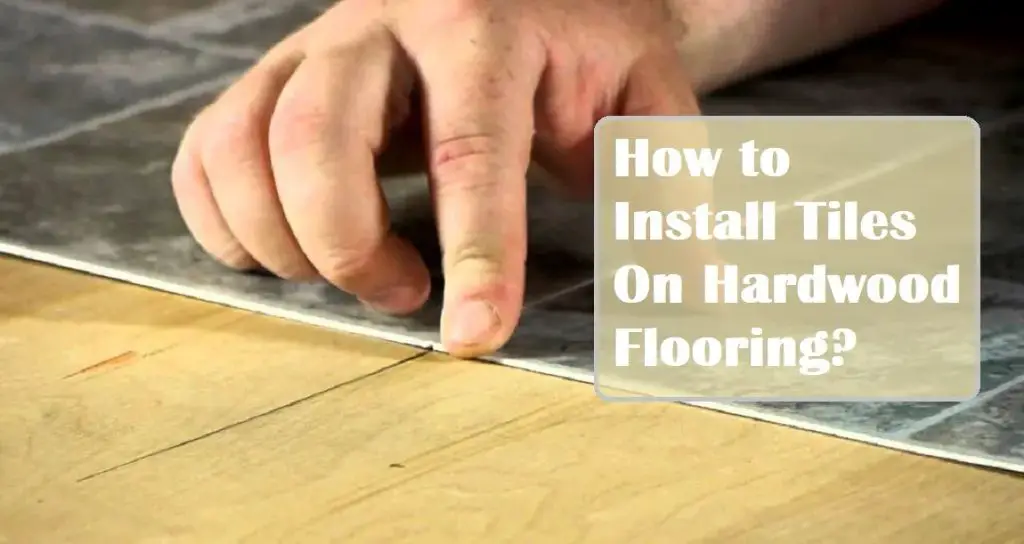How Do You Tile A Piece Of Wood?
Tiling a wood surface can transform the look and feel of a room by adding visual interest and texture. Wood-look porcelain and ceramic tiles have become increasingly popular as an alternative to natural wood flooring, offering the appearance of real hardwood with increased durability and easier maintenance. When properly installed, tile can be a beautiful and long-lasting flooring option for both residential and commercial spaces.
The process of tiling over wood requires careful planning and preparation to ensure proper adhesion and prevent future problems. In this comprehensive guide, we will walk through the key steps involved in tiling wood surfaces, from selecting the right tiles and preparing the subfloor to laying the tiles, grouting, and sealing. With some basic DIY skills and the right materials, you can achieve a stunning wood-like tile floor that will stand the test of time.
Choosing the Right Tile
When tiling a piece of wood, you’ll first need to decide which type of tile to use. There are several options to consider:
Porcelain tile – Made from clay and fired at high temperatures, porcelain tile is one of the most popular choices. It’s durable, stain resistant, and available in a wide variety of styles. Porcelain works well for tiling wood surfaces.
Ceramic tile – Also made from clay, ceramic tile comes either glazed or unglazed. Glazed ceramic provides a shiny, water-resistant surface while unglazed has a more textured appearance. Ceramic tile is budget-friendly but less durable than porcelain.
Glass tile – Comprised of small pieces of glass, glass tile has a unique translucent appearance. It’s typically used for accent walls or backsplashes. Durability can be a concern with glass tile.
Consider factors like durability, texture, color/style, and cost when selecting tiles. Porcelain or ceramic are good all-around options for wood surfaces. Choose tiles rated for floor installation for added durability.
Preparing the Wood Surface
Properly preparing the wood surface is a crucial step before laying tile. The goal is to create a clean, smooth, and sealed surface for the tile and adhesive to adhere to. There are a few key steps in prepping wood:

First, the surface must be sanded. Use coarse grit sandpaper (around 40-60 grit) to sand down any uneven spots, high areas, bumps, or old adhesive. Sand until the surface is smooth. Next, vacuum and wipe away all dust and debris. The surface needs to be completely clean for the sealant to properly adhere.
Apply a paint-on wood sealer to the sanded wood according to the manufacturer’s directions. Water-based sealers like polyurethane are a good option. The sealer will protect the wood from moisture penetration. Let the sealer dry fully before moving to the next step. Applying a compatible primer before the sealer can also help preparation.
Lastly, fill any cracks, holes, or large gaps in the floor using a flexible crack filler designed for wood or an adhesive filler. Let dry completely. Now the wood surface is ready for tile underlayment to be applied.
For full instructions, see this guide on preparing a wood subfloor for tile: https://www.homedepot.com/c/ah/how-to-prepare-a-subfloor-for-tile-installation/9ba683603be9fa5395fab90dfe976f0
Laying the Tile Underlayment
The tile underlayment provides a stable base layer for the tile. The two most common underlayment materials for wood surfaces are cement board and Ditra:
Cement board is made from Portland cement and sand reinforced with fibers. It provides a durable, waterproof surface for tiling. Cut the cement board to size for your project with a utility knife or special cement board shears. Screw the panels to the wood subfloor with cement board screws, keeping a 1/8 inch gap between panels. Tape all joints with fiberglass mesh tape and skim coat with dry-set mortar.
Ditra is a polyethylene underlayment with a grid structure that allows for uncoupling. Its flexibility helps prevent cracks if the wood subfloor shifts. Roll Ditra out over the subfloor and cut it to fit. Fasten it to the wood with a staple gun or other mechanical fasteners. Apply thinset mortar to the seams between Ditra sheets and embed seam tape to join them.
Both cement board and Ditra provide a suitable underlayment for tiling onto a wood subfloor. Choose the product that works best for your project and skill level. Properly installing the underlayment is crucial to achieving a successful tile finish.
Applying the Adhesive
Applying the right amount of adhesive is crucial for proper tile installation. Using the proper trowel is key to achieving full coverage of the substrate. The trowel size determines how much adhesive is applied per square foot. Choose a trowel size that aligns with the tile manufacturer’s recommendation, usually a 1/4” or 3/8” square- or U-notched trowel.
Fully cover the back of each tile. Spread only as much adhesive as can be tiled over in about 10-15 minutes before it skins over. Spread the adhesive in straight lines across the underlayment, holding the trowel at a 45-degree angle. Immediately after, go back over the area with the notched side of the trowel held perpendicular to the floor, combing across the original lines. This ensures proper adhesive coverage and thickness.
Make sure there are no gaps, voids, lumps or bare spots in the adhesive. The tiles need maximum contact with the adhesive for a proper bond. Don’t spread more adhesive than can be tiled over within the working time. If the adhesive skins over before setting tiles, scrape it up and reapply fresh adhesive before proceeding.
Setting the Tiles
When setting the tiles, planning the layout pattern and grout lines is important for the visual appeal of the finished project. Popular layout patterns on wood include straight bricklay or a simple offset bricklay. Make sure to dry lay the tiles first to map out the pattern and ensure even spacing and grout lines. The grout lines should be uniform in width, generally 1/8 inch for wall tiles and 1/4 inch for floor tiles. Wider grout lines may be preferred for larger format tiles or tiles with greater size variation. Plan the layout so tile edges align between rows, and avoid ending rows with thin slivers of tile. Cut border and edge tiles to size as needed with a wet saw. Follow the adhesive instructions for proper drying time before setting tiles. Use tile spacers between tiles to maintain even grout lines. Be sure tiles are fully embedded in the adhesive with no gaps or raised edges. Allow the tile to set per adhesive instructions before grouting.
Sources:
https://www.rubi.com/en/blog/can-you-tile-on-wood/
Grouting
After the tile adhesive has cured completely, which can take 24-48 hours, it’s time to grout the tiles. Using the right grout is important when tiling wood. Standard cement-based grout can be too rigid and may crack. Instead, use a polymer-modified grout or epoxy grout, which is more flexible. Allowing the proper cure time is critical so the grout bonds properly and doesn’t crumble. Refer to the manufacturer’s instructions for recommended cure times.
When grouting, work in small sections and wipe off excess grout before it dries. Using a grout with a latex additive will make it easier to clean. For wider grout lines, consider using a grout bag to completely fill the joints. After grouting, wipe down the tiles to remove any haze and seal the grout once fully cured. Products like Ardex Grout Booster can help strengthen and waterproof grout.
Sealing
Sealing tiles and grout after installation is an important step to protect and extend their life. Although porcelain and ceramic tiles are durable, the grout between them is porous and susceptible to staining from spills and moisture. Sealing creates a protective barrier.
For best results, use a penetrating sealer formulated for porous grout rather than a topical sealer. Apply it carefully according to the manufacturer’s instructions, ensuring complete and even coverage. Allow proper drying time before using the tiled surface. Reapply sealer periodically for continued protection.
Sealing may also help reduce the amount of dirt and grime that accumulates in the grout lines over time. This will keep your tiled wood looking cleaner and more vibrant.
When choosing a sealer, select one that is non-yellowing, mold/mildew resistant, and ideally low odor. Popular options include silicone, acrylic, and epoxy-based sealers. Always test in an inconspicuous area first.
With proper sealing, you can help prevent staining, discoloration, and deterioration of the grout lines on your beautiful wood-look tiles.
For more tips, see this guide from Houzz and RUBI.
Maintenance
Properly maintaining your wood-look tile is crucial for keeping it looking beautiful for years to come. Here are some tips for cleaning and re-sealing the tiles:
For routine cleaning, sweep or vacuum the floor to remove any dirt or debris. Then, mop the floor using a pH-neutral cleaner made specifically for tile and stone. Many people recommend Bona Stone, Tile & Laminate Cleaner or Method All-Purpose Floor Cleaner for wood-look tiles. Rinse the mop frequently and replace the cleaning solution often.
Every 6-12 months, you’ll want to deep clean the tile and grout lines. Mix up a cleaning solution of warm water and tile/grout cleaner or make a DIY cleaning solution of white vinegar and water. Use a stiff brush or grout brush to scrub the grout lines. Rinse thoroughly with clean water and allow to dry completely.
To help preserve the original color and shine of the tile, reapply a penetrating sealer every 2-3 years as recommended by the manufacturer. First clean the floor thoroughly. Then apply the sealer with a paint pad applicator or brush, allowing it to penetrate for 5-10 minutes before wiping away any excess. Let it cure fully before using the floor again.
With proper care and maintenance, your wood-look tile can stay looking like new for many years. Be sure to use the right cleaners and re-seal regularly.
Conclusion
Tiling a piece of wood can provide a beautiful, durable surface while still maintaining the natural warmth and texture of real wood. With the right preparation, materials, and techniques, even an amateur DIYer can achieve professional-looking results.
The keys to success are properly preparing the wood surface, using a suitable underlayment, adhesive, grout, and of course high-quality tile that mimics real wood. Take the time to make sure each step is done thoroughly – from sanding and cleaning to letting adhesives fully cure before grouting. Patience leads to the best outcome.
With this new wood tile floor or wall, you can enjoy the look of real hardwood for years to come. Just be sure to follow manufacturer’s instructions for sealing and ongoing maintenance. Done right, your wood-look tile can be almost indistinguishable from actual wood planking.


